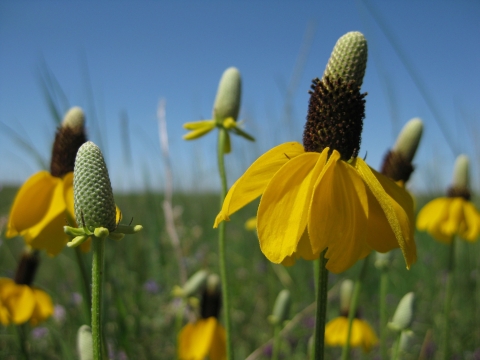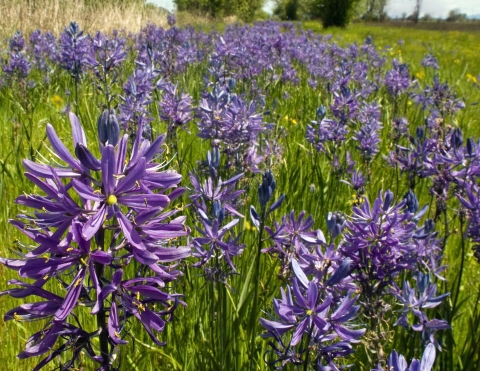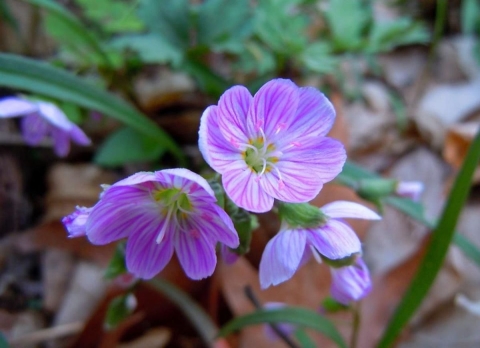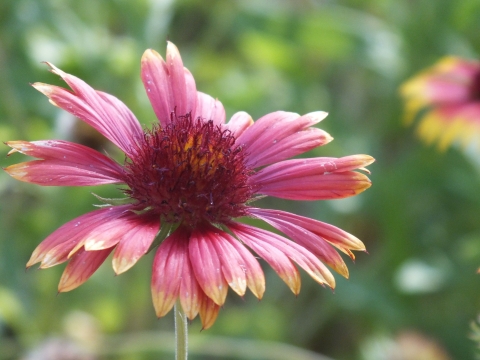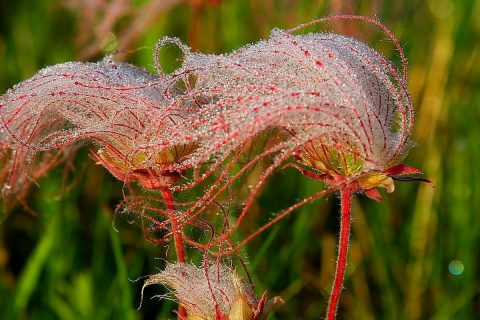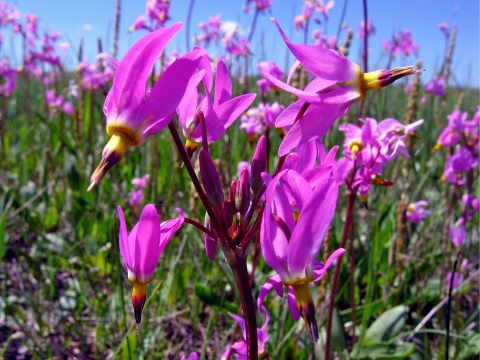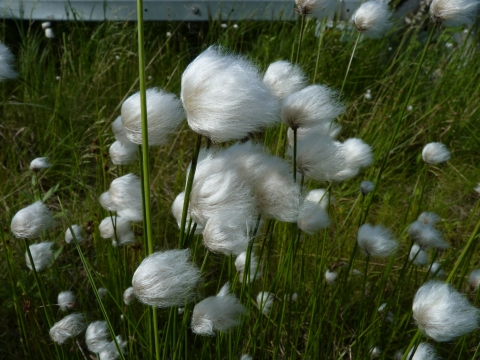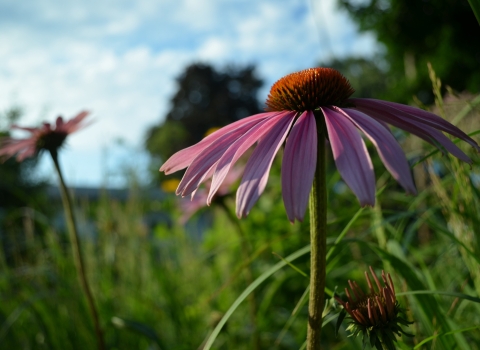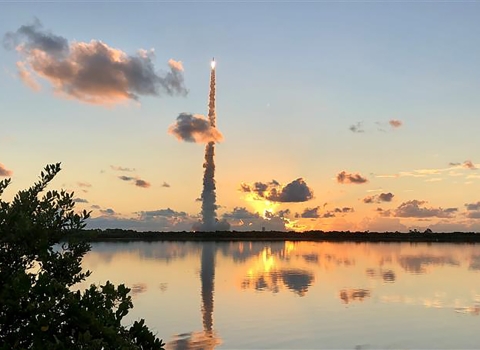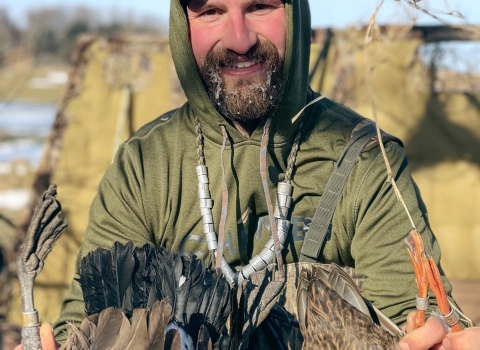Love wildflowers? You’re in the right place. That’s true almost wherever you are in the United States — if you time it right.
Some wildflowers are in their glory in spring. Others bide their time until summer or fall.
Where to look is easy. National wildlife refuges often offer spectacular wildflower displays. That stands to reason since these public lands conserve many native plants.
Join us on a swing around the country to see some wildflower gems. While en route, we’ll share some tips about when to see your favorites and why to grow your own.
Native camas lily was once so vital to the Northwest that several places in Idaho, Washington and Montana bear the plant’s name. So does Camas National Wildlife Refuge in Idaho.
An early to mid-spring bloomer, the wildflower grows from a bulb that Native Americans prized as food. The Nez Perce helped explorers Meriwether Lewis and William Clark harvest and roast it.
Growing camas bulbs is easy. (Plants grown from seeds may take years to bloom.)
Why grow native wildflowers? Going native can help the bees and butterflies that spread pollen from plant to plant, helping plants bear seeds and fruit. These pollinators need your help as undeveloped lands shrink. Growing wildflowers can also help a whole community of living things. That’s what motivates Prairie Zone Biologist Pauline Drobney at Neal Smith National Wildlife Refuge in Iowa. Each year, refuge staff and volunteers there plant up to 250 species of native plants to restore threatened tallgrass prairie.
Easy-to-grow, drought-tolerant coreopsis is found across the country. It typically blooms in April, May and June. Learn how to grow it from the Native Plant Network.
Among the many refuges with one or another variety of coreopsis are Cape May National Wildlife Refuge in New Jersey and Attwater Prairie Chicken National Wildlife Refuge in Texas.
Planting native doesn’t mean sacrificing drama. Drobney convinced a skeptical neighbor of that by showing him the butterfly milkweed and blazing star in her yard. “It was just knock-your-socks-off color,” she says. Coreopsis offers further proof of wildflowers’ vibrancy.
Even when planting native, gardeners may find wildflowers hold surprises.
Take Indian paintbrush, a brilliant red wildflower of the West. Most paintbrushes are partial parasites, their roots joined with roots of other plants. That makes the flowers tough to transplant, and they are difficult to grow from seed.
Plan instead on enjoying paintbrushes at places like Sheldon National Wildlife Refuge in Nevada and Sevilleta National Wildlife Refuge in New Mexico. You might see Indian paintbrushes on a spring wildflower walk at Wichita Mountains Refuge with the Friends of the Wichitas, a refuge support group.
Another reason to plant native: Native plants are adapted to local conditions and to other species’ needs, says U.S. Fish and Wildlife Service ecologist Kathleen Blair.
Exotics — species grown outside their native range — are not. So, she says, “if you plant non-native or exotic species, a whole lot of other local species cannot use them.” Native bees will have to look elsewhere for pollen and nectar.
“It’s generally a bad idea to grow plants from another region,” agrees Fish and Wildlife Service wildlife biologist Karen Viste-Sparkman. “They might become invasive because they don’t have the natural controls in place, or they might not thrive because they aren’t adapted to local conditions.”
Claytonia virginica, commonly known as spring beauty, is native to the eastern United States. It grows from an edible tuber. Hence the flower’s nickname: fairy spud. Both the Iroquois and Algonquin ate its boiled or roasted tubers. Outdoorsman and author Euell Gibbons devoted a whole chapter of his foraging cookbook “Stalking the Wild Asparagus” to spring beauties.
Look for the wildflower in mid- to late spring at Port Louisa Refuge and elsewhere in the East and Midwest.
Blooming from early summer to early fall, perennial blanketflowers add drama to landscapes and are butterfly magnets. This species of blanketflower, Gaillardia pulchella, is native to Florida and much of the Southeast and south central states.
If you think planting just locally native plants will be limiting, think again.
“The array of plants native to place is astounding,” says Drobney. Her home state of Iowa, for example, has more than 1,500 kinds of native plants that conduct water and minerals through their tissues. “Other states have as many or more,” she says.
By planting native, you’re also helping to preserve a piece of the local gene pool.
If you’re unsure how to find a local reputable native plant group, you might call your state’s fish and game office or Native Plant Society or The Nature Conservancy. Or try:
- USDA Natural Resources Conservation Service provides a list of plants in your state.
- Native Plant Information Network houses a native plant database and searchable image directory maintained by the Lady Bird Johnson Wildflower Center.
- Plant Conservation Alliance contains links to plant guides by region.
- The National Seed Strategy aims to increase stocks of genetically appropriate local native seed. The National Wildlife Refuge System is heading the Service’s participation in this effort.
Smartweed, a pink- or white-flowered plant in the buckwheat family, has a peppery flavor that some have put to use in cooking. It has also been used for medicinal purposes. Smartweed generally blooms from July through October.
On their return trip east through Washington and Montana in the 1800s, Lewis and Clark collected arrowleaf balsamroot, along with other plant species. The specimens they saved are preserved in the Lewis & Clark Herbarium in Philadelphia. The explorers noted how Native Americans relied on the drought-tolerant plant for food, eating it raw or boiling or steaming its roots and leaves. They also used it as salve for wounds.
Wild animals, such as elk, mule deer and bighorn sheep, also use the plant for food. Learn more about the plant’s uses and history.
Look for the wildflower at Turnbull National Wildlife Refuge and Columbia National Wildlife Refuge in Washington.
Prairie smoke, a member of the rose family, is a spring-blooming perennial found in native prairie. The flower is said to look like a small column of smoke. Bees spread pollen from flower to flower by forcing themselves through petal clusters to get to the pollen and nectar inside.
The perennial is native to much of western North America.
Look for prairie smoke at refuges across the Dakotas and Minnesota.
The shooting star offers a good example of why the shrinking of our prairies spells doom for many plants and animals.
To survive, the prairie plant needs bees to spread its pollen from plant to plant. But not just any bees. The only ones that will do are those that vibrate their wings to a particular frequency. The right hum causes pores on the flower’s anthers to open, and the pollen inside to spill over the bees, in a process called buzz pollination.
The more prairies are lost to the plow, the fewer native prairie plants like shooting stars there are to be found. That, in turn, lowers the chance that the matched bee species will find them.
The coldest regions of North America have wildflowers, too. Cottongrass, a flowering perennial, is widespread in the Arctic tundra of Alaska. Despite its name, it’s not a grass, but a member of the sedge family.


